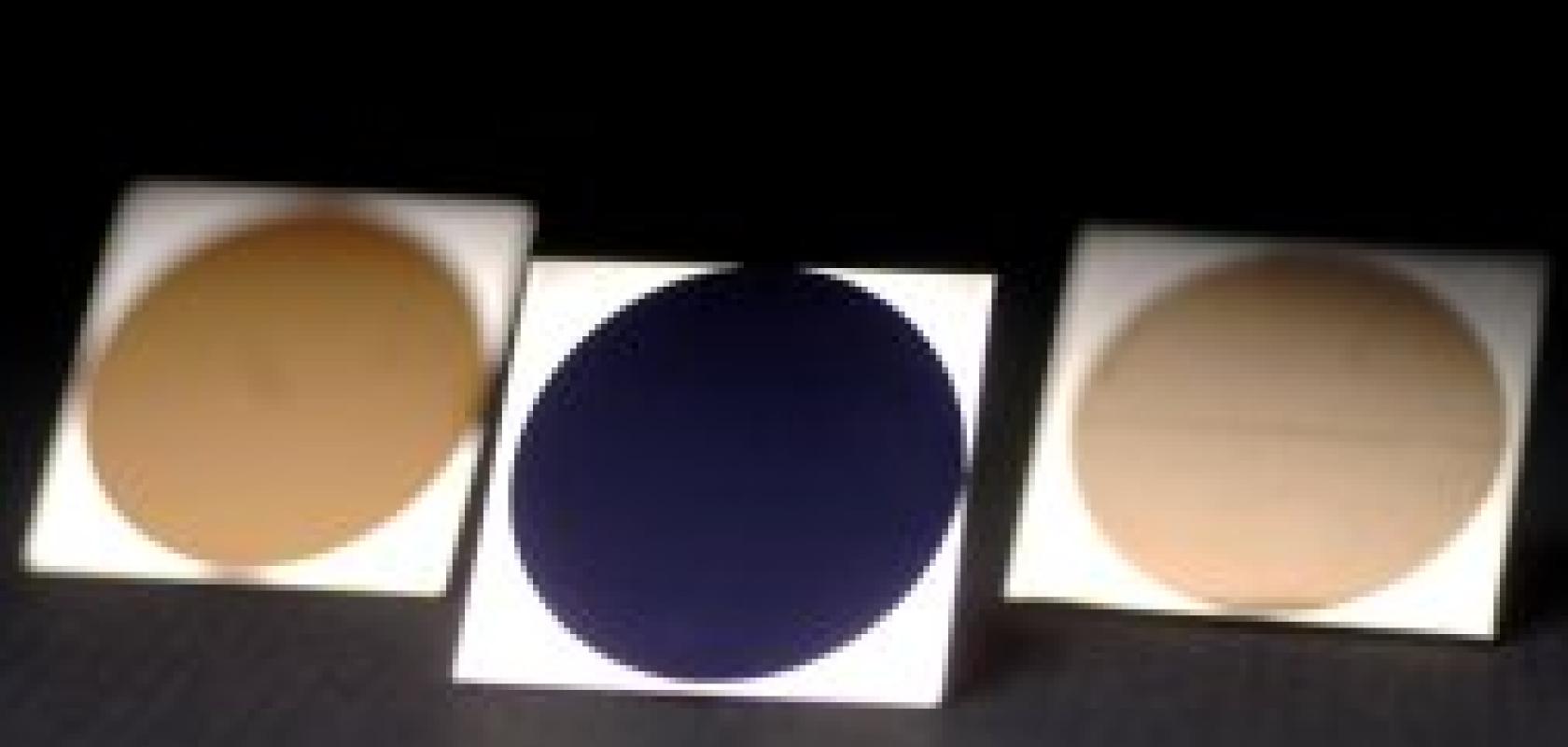In a seemingly alchemical process, scientists have found that they can change the colour of different metals. By creating tiny nanoscale structures on the surface of the metal the researchers have already achieved gold-coloured aluminium and blue titanium, and it is hoped that other colours will soon follow. They have also created an iridescent surface that reflects different colours depending on the direction from which it is viewed.
The research, led by Chunlei Guo at the University of Rochester, USA, follows the discovery three years ago that ultrashort pulses of laser light could be used to alter the surface of gold so that it absorbed all visible wavelengths of light, giving a pitch-black finish.
‘Since then we have been trying to get control of the process, so that we could selectively absorb certain bandwidths [of the visible spectrum] and reflect different colours,’ Guo told electrooptics.com.
Normally substances reflect or absorb different wavelengths depending on the way the electrons are structured within the atoms and molecules. The team found that by creating tiny nanostructures – just 10-100nm in size – on the surface of the metal, they could confine the movement of electrons to certain pathways, changing the ways they can interact with the waves of light.
The team found that by changing the shape, size and density of the nanostructures on the surface they could change the wavelengths of light that were absorbed and reflected. They achieved this by altering the pulse duration, intensity and repetition rate of the femtosecond pulses.
So far the colours have been limited to black, gold and blue, but Guo believes the physics behind the technique means that it is only a matter of time before other colours can be achieved. ‘I believe we can achieve any colour on any metal,’ he says. He thinks it may even be possible to machine other reflective surfaces in a similar way.
In addition to these solid colours, Guo has also created an iridescent surface that reflected many different colours and shimmered like a butterfly’s wing. To achieve this, the team created a period structure on the surface that repeated itself at regular intervals. The reflected light from these structures interfere with each other to create a new wave form, which changes depending on the direction from which it is viewed, giving the appearance of varying colour.
It is hoped the technique could have multiple uses. ‘It would be good for laser marking, to produce a picture on a metallic surface. There has also been interest from the jewellery industry,’ said Guo. It could also be used to create absorbent mirrors and optics for the photonics industry.
However, there is still some way to go before that is possible: ‘Before we can use it [for commercial applications], we need to understand how to improve the efficiency and the physical mechanisms of the technique,’ said Guo.


